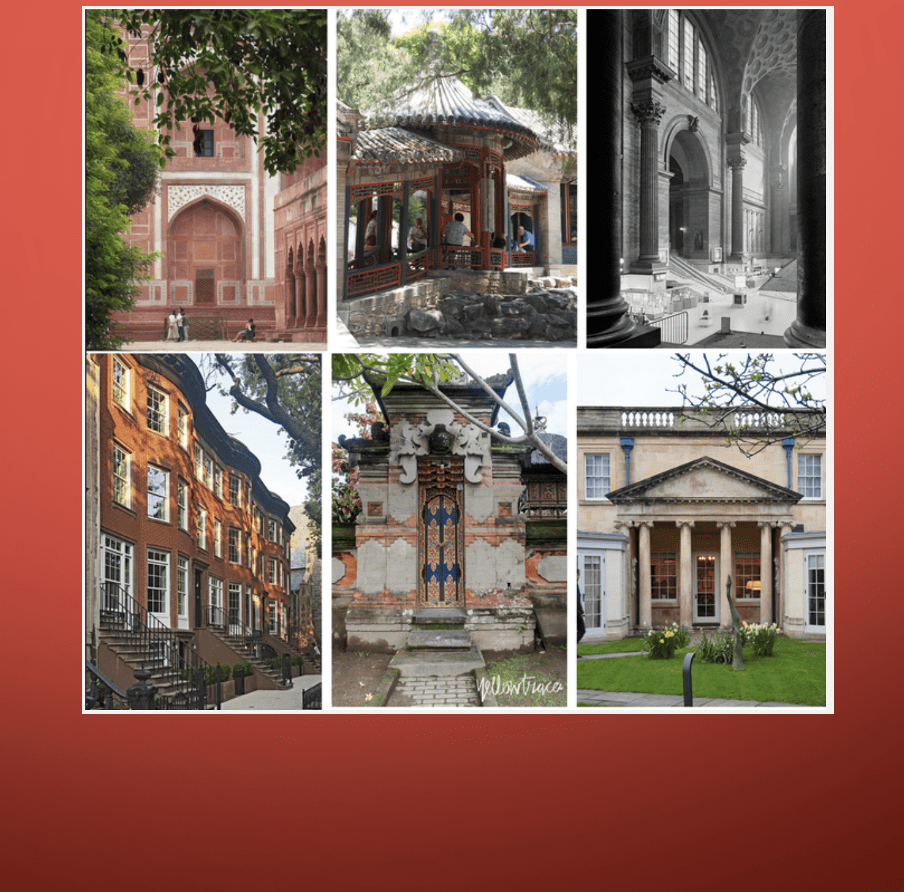Search Posts
Recent Posts
- Outdoors in RI: Help keep recreation areas clean. Invasive Milfoil, trash. 2A update – Jeff Gross July 26, 2024
- Real Estate in RI: Highest-ever sale in Queen’s Grant, EG $1.25M, by Residential Properties July 26, 2024
- Homeless in RI: Gov. Newsom issues Executive Order. Remove California’s encampments. July 26, 2024
- Let the games begin. XXXIII Summer Olympics – John Cardullo July 26, 2024
- GriefSPEAK: What would you do? – Mari Dias Nardolillo July 26, 2024
Categories
Subscribe!
Thanks for subscribing! Please check your email for further instructions.

Traditional design is healthier – David Brussat
by David Brussat, Architecture Here and There, contributing writer
Photo: Six examples of traditional architectural design from around the world that incorporate an intuitive understanding of multiple fractals. (Classical Planning Institute)
Without thinking much about it, most people prefer traditional architecture. Now it seems as if more detailed and ornamental styles of design for buildings and cities are not only more popular but more natural and more healthy. A new study of studies in the Urban Science Journal concludes that:
[W]e perceive urban space the same way as our ancestors perceived the landscape of our emergence, the African savannah. With significant implications for the design of cities based on our perception of streetscapes, the authors conclude that, in order to promote wellbeing, we should design streetscapes to “please” our brain.
The authors of the article in Urban Science Journal – neurobiologist Aenne Brielmann, architect/planner Nir Buras, mathematician Nikos Salingaros and physicist Richard Taylor – focus on the role of “multiple fractals”: patterns that self-repeat at different scales in nature and in the built environment. This natural phenomenon of nature, when it is absent from architecture, starves the brain as it perceive streetscapes. “What happens in your brain as you walk down the street?” ask the authors, who point to multiple studies to explain the answer.
The Urban Planning Institute’s press release about the study explains it more concisely, and offers a link to the study of studies itself.
The insights that arise from the four authors’ summary are not quite new, but their role in contradicting what most architects and city planners have believed for a century could, if embraced, enable urbanists to design streets and buildings that “foster well-being, with such striking benefits as high as a 60% reduction in observers’ stress and mental fatigue.”
Fractals are the key to understanding why human beings are drawn to buildings and cities of ordered complexity arising from traditional architecture and urban patterns. For many centuries, all architecture featured detail of greater or lesser complexity. Architecture advanced by trial and error through generations of builders and designers. A century ago, tradition was increasingly challenged by new styles, dubbed “modern,” that downplayed detail and ornament in favor of a supposed utility expressed by the metaphor of machinery, with novelty more often trumping utility in prioritizing architectural development.
The public has resisted modern architecture for reasons that the eye suggests are obvious. The embellishment of traditional architecture creates beauty, and that is enough for most people. If you remove ornament from traditional architecture, you would have modern architecture. Ever since the advent of modernism, most people have found its vacant slabs boring. A multitude of surveys and anecdotal evidence has demonstrated the public’s skepticism for decades.
Indeed, popular resistance to styles based on the machine metaphor tends to undermine its utility. If people do not love a building, if they do not love where they live and work in a city, they will not provide for its repair and upkeep.
Recent research in neurobiology, tracing how the brain processes visual data back to the early development of human perception millennia ago, has advanced the knowledge of fractals and deepened our understanding of their role in how we feel about what our eyes tell us about our manmade surroundings.
Based on the makeup of the human brain, the authors sequence and characterize the earliest stages of visual processing. Laying this perceptual foundation validates the common urban experience we all share – places most people recognize as beautiful – or ugly. The perception of multiple fractals – a fundamental human characteristic – is among the first things to be processed, within 50 milliseconds.
Intuitive understanding of cities and buildings, and of how tradition regenerates patterns of design conducive to human nature, has long proved stronger than the pseudoscientific explanations modernists give for why modern architecture is the correct approach for modern times. But in modern times ancient wisdom often requires scientific backing. Without it, the quality of our built environment and the pursuit of a more humane existence will continue to be a matter of power rather than of truth. This is why the article by Brielmann, Buras, Salingaros, and Taylor is such a vital contribution to architectural discourse.
_____
To read other articles by David Brussat: https://rinewstoday.com/david-brussat-contributing-writer/

My freelance writing and editing on architecture and others addresses issues of design and culture locally and globally. I am a member of the board of the New England chapter of the Institute of Classical Architecture & Art, which bestowed an Arthur Ross Award on me in 2002. I work from Providence, R.I., where I live with my wife Victoria, my son Billy and our cat Gato. If you would like to employ my writing and editing to improve your work, please email me at my consultancy, [email protected], or call (401) 351-0457
